kennedy space center
Latest
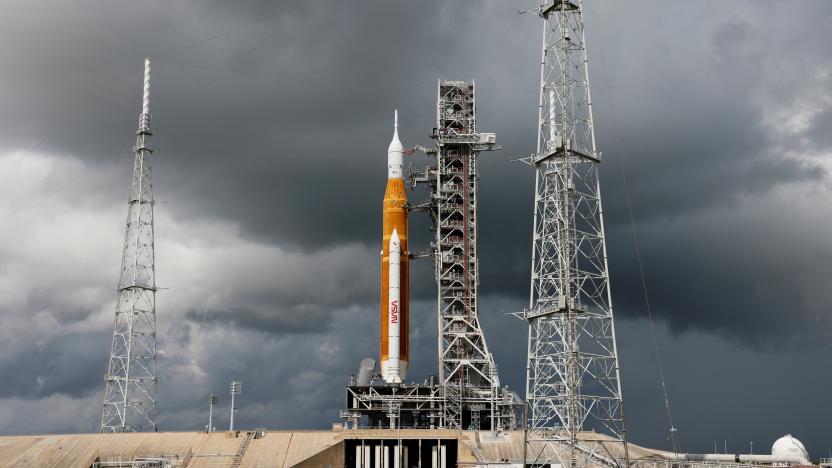
NASA will roll Artemis 1 back to shelter it from Hurricane Ian
The Space Launch System and Orion spacecraft will be moved to the Vehicle Assembly Building.
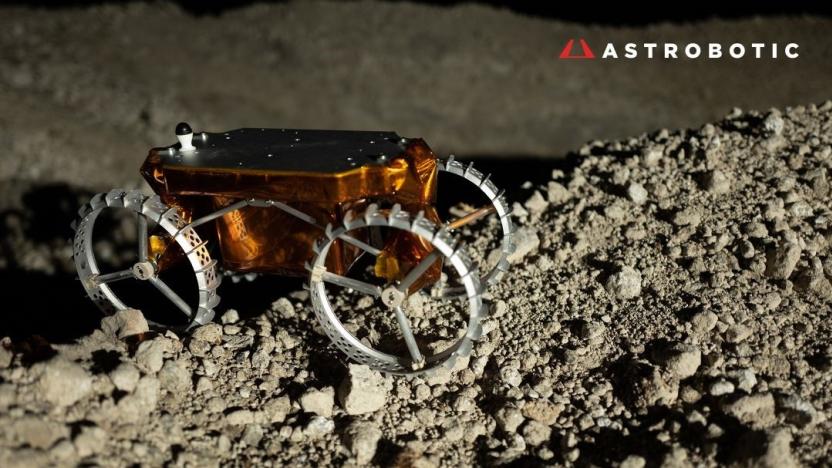
Astrobotic’s tiny Moon rover is on its way to NASA for testing
Astrobotic's lunar CubeRover is heading to Kennedy Space Center for testing.
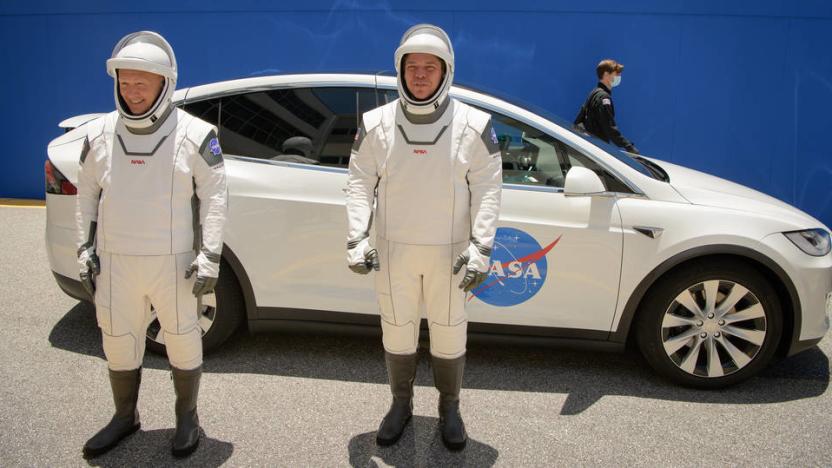
Watch NASA and SpaceX launch astronauts (updated)
This afternoon NASA astronauts will take off from US soil for the first time since NASA’s space shuttle program ended in 2011. They'll travel in a SpaceX Crew Dragon spacecraft to the ISS.
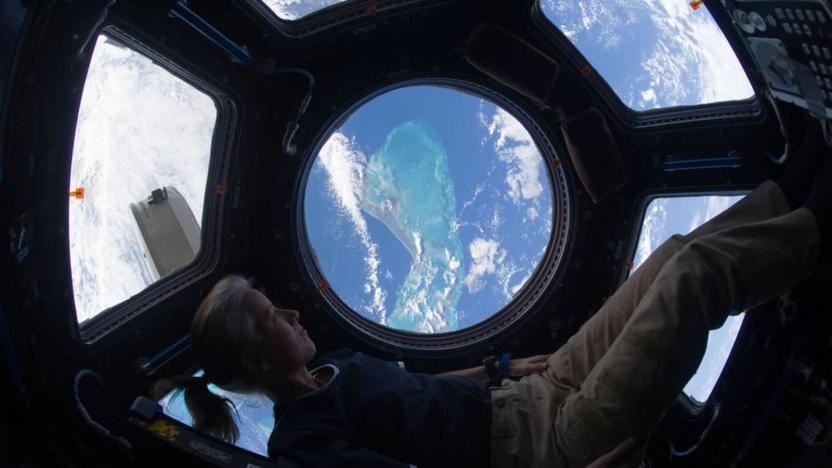
Two more astronauts join SpaceX's first crewed mission to the ISS
Two more astronauts have been assigned to the first operational crewed flight of SpaceX's Crew Dragon on a mission to the International Space Station (ISS). NASA astronaut Shannon Walker and Noguchi Soichi, of the Japanese Aerospace Exploration Agency (JAXA), will join NASA astronauts Michael Hopkins and Victor Glover Jr., who were assigned to the mission in 2018. If all goes according to plan, this will be the first in a series of regular Crew Dragon flights to the ISS, NASA said in a press release.
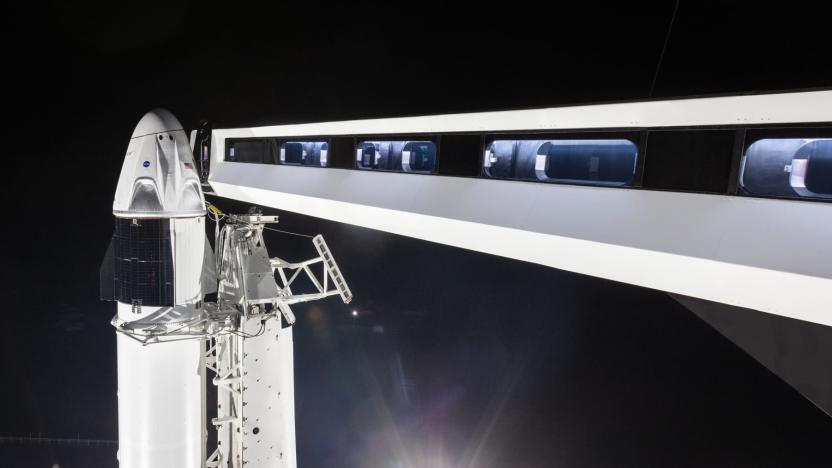
Watch SpaceX's Crew Dragon in-flight abort test at 10:30AM ET on Sunday
One of the last major steps before SpaceX flies its Crew Dragon craft with real NASA astronauts onboard is an "in-flight abort test." Scheduled to take place during a four-hour window on Saturday, Sunday or Monday morning, it will test the vehicle's ability to safely get back to Earth if there's a problem during ascent.
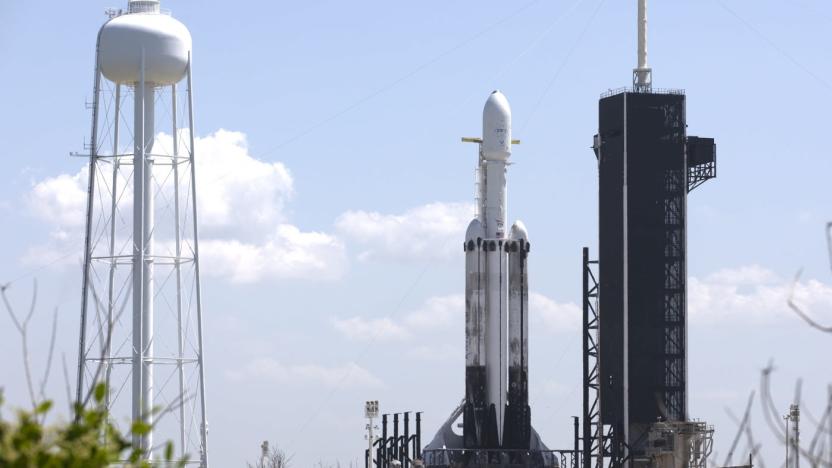
SpaceX's 'challenging' Falcon Heavy mission launch goes 2/3 on booster landings
Last year SpaceX launched its massive Falcon Heavy rocket for the first time, but the company describes tonight's STP-2 mission as one of the "most challenging" launches in its history. It's also the first Falcon Heavy launch to reuse side boosters, which previously took flight just 74 days ago on the Arabsat-6A mission. The tricky part is after it takes off, with a planned "four separate upper-stage engine burns, three separate deployment orbits, a final propulsive passivation maneuver and a total mission duration of over six hours." SpaceX's mission animation video shows what we're expecting to see:

SpaceX Crew Dragon spacecraft successfully launched
Ever since the Space Shuttle program ended in 2011, NASA has relied on Russian Soyuz missions to get astronauts back and forth from the International Space Station. In order to maintain control over its own missions, the Commercial Crew program has sought replacements, with SpaceX and Boeing in competition for the contract. After a number of delays, SpaceX will go first with a test launch of its Crew Dragon vehicle, scheduled to take off from Launch Complex 39A in Cape Canaveral at 2:49 AM ET. SpaceX will have a live webcast of the Crew Demo-1 launch, which you can watch here, along with coverage from NASA TV. The broadcasts should start at 2 AM. To synchronize with the ISS, it's an instantaneous window so there's no waiting for this one -- it either will or will not go tonight.

The Big Picture: NASA decommissions its shuttle mounting port
NASA's defunct space shuttles have found homes around the US and the 747s that brought them there have also been put to pasture. With no more shuttle carrier aircraft (SCAs), the agency has no more use for the Kennedy Space Center mate-demate facility used to pull the spacecraft off them. The 150-foot long, 10-story high truss structure was used to separate the craft when the shuttle landed anywhere other than Florida. (A similar facility was demolished earlier at Edwards Air Force base in California.) The net result was 844,700 pounds of scrap metal, but you can still see the shuttles at the Smithsonian Air & Space museum, New York City's Intrepid Museum, the California Science Center and, of course, the Kennedy Space Center itself. To see the sad remains of the demount facility, check below.
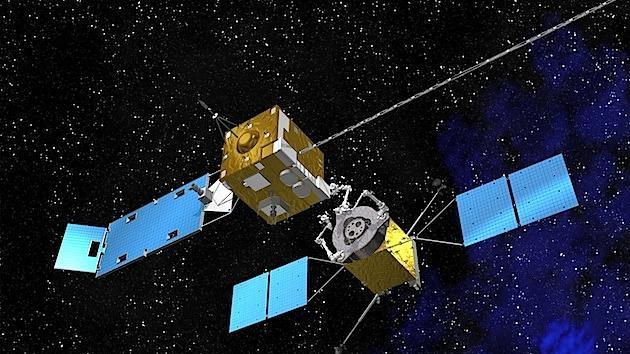
NASA's building a satellite refueling robot platform that works... in space
Currently, every satellite put into orbit will become interstellar refuse, destined to be tracked (and perhaps dismantled) by DARPA or eventually disposed of by gigantic lasers (maybe). Naturally, NASA's not so keen on such waste, and it knows that many satellites' shelf lives can be extended with the addition of more fuel. Enter the Remote Robotic Oxidizer Transfer Test (RROxiTT), a project aimed at building a robot platform capable of refilling satellite fuel tanks both on earth and in space. To make it happen, scientists are working out a method for delivering highly combustible oxidizer (aka a chemical used to ignite rocket fuel) to satellites that were not designed to be serviced. Oh, and they need to be able to do it remotely and safely, of course. And that latter bit is a particular sticking point, as oxidizers are "toxic, extremely corrosive and compressed" according to NASA, which is why the system is being developed for use both on land and in orbit -- why put a human in harm's way when a robot can do the job, right? Image Credit: NASA

Visualized: Space Shuttle Atlantis makes its final journey, arrives at new home (video)
On Friday, Space Shuttle Atlantis made its final voyage, marking the last time an orbiter in America's shuttle program would be on the move. We were on-hand during the occasion and followed Atlantis as it slowly trekked to its destination, a 90,000 square-foot exhibit building at Kennedy Space Center's Visitor Complex. To live out the event vicariously, check out the photos below or hit the jump for the video.

Watch Space Shuttle Atlantis' final journey to the Kennedy Space Center visitor building (video)
It's always bittersweet when we see great vehicles on their way to becoming museum pieces, after all, they represent something pretty special. Space Shuttle Atlantis landed in Florida back in July, where it's been locked inside the vehicle assembly building at the Kennedy Space Center -- which is where we got a chance to look inside. Now it's making its final journey, a 10-mile cruise along the road to the visitor center, where it'll hopefully inspire generations for many years to come. If you'd like to watch the operation as it takes place, then head on past the break to watch the livestream.

Space Shuttle Atlantis hands-on: a look inside (video)
Space Shuttles Discovery, Endeavour and Enterprise have all left Kennedy Space Center for new homes, but Atlantis? She's staying. Come November 2nd, the orbiter will be wheeled out to a 65,000-square-foot exhibit, which is still being constructed at KSC's visitor complex. Though the craft's cargo bay doors will be open and its remote manipulator arm extended when its displayed, visitors won't be able to climb aboard it -- or any of the other shuttles, for that matter. However, we got the chance to visit Bay 2 of the Orbiter Processing Facility, step inside Atlantis and give it the hands-on treatment. Look out below for the gallery or hit the jump for the full video tour.

Space Shuttle Endeavour hitching a ride atop a 747 to its new home on September 17
Space Shuttles Discovery and Enterprise have already settled into their new homes, and now Endeavour is scheduled to depart for its future abode at the California Science Center on September 17th. Taking to the skies atop a modified Boeing 747, the shuttle will make pit stops in Texas and at Edwards Air Force Base in the Golden State before touching down at Los Angeles International Airport on the 20th. During the journey out west, the Shuttle Carrier Aircraft will buzz certain cities and NASA sites along its flight path at roughly 1,500 feet in altitude. After its voyage, Endeavor will head to the science center on October 13th, but won't be on display until the end of the month. Yearning to catch a glimpse of the historic vehicle before it reaches its final resting place? Head past the jump for its flight schedule and flyover details.

NASA's Morpheus lander detects hazards, noisily passes tethered flight test (video)
While it's not landing on Mars any time soon, NASA took a breather from Curiosity's adventures to showcase the Morpheus Lander. The prototype went through its first (tethered) flight test at the Kennedy Space Center just before the weekend, showcasing its methane-powered rocket system. It's this rocket setup which could make the Morpheus Lander a strong candidate for future landings. It's both safer than rocket fuel and NASA suggests that methane gas discarded from the International Space Station could be enough to top up the lander's fuel tanks without necessitating a visit back to Earth. Morpheus' built-in guidance system also reduces the amount of input needed from mission control -- the pod has been practicing hard on its own hazard field near the Space Center. After passing the test with its training wheels on, the first free flight descent has been tentatively penned in for later today. Crank the volume low -- it gets loud -- and watch Morpheus test those right rockets after the break.

Google takes one giant leap: now lets you Street View the Kennedy Space Center
Today's a stupendous day for lovers of the one and only National Aeronautics Space Administration -- nearly half as great as when we took you inside Kennedy Space Center shortly after it had opened its fascinating doors to the public. At any rate, Google announced earlier that its captivating (and sometimes troubling) Street View technology had made its way into NASA's KSC, allowing people to check out what the compound is all about and what sort of sensational machinery lies inside. With Mountain View's doings, you can now find your way around different spots within the Space Center, including the Launch Firing Room, Vehicle Assembly Building and, as seen above, the Space Shuttle Launch Pad. There's a video past the break if you're interested in a quick preview, otherwise you can give it a go yourself by clicking the more coverage link below.

Inside NASA's Launch Control Center at Kennedy Space Center
At the dawn of the Space Shuttle program, NASA's Launch Control Center (LCC) was placed off limits for public tours. On June 15, however, busses embellished with Kennedy Space Center (KSC) decals began whisking visitors off to the control complex for the first time in more than three decades – nearly a year after the final shuttle mission last summer. More Info NASA opens up Launch Control Center for public tours The end of an era: what the space shuttle means to Engadget Space Shuttle Endeavour lifts off one last time (video) After clearing a security checkpoint, our bus wheels its way deep into Kennedy Space Center, NASA's 240,000-acre property on Merritt Island, Fla., that doubles as a wildlife refuge. The monolithic Vehicle Assembly Building (VAB) comes into view and grows larger as we approach. Referred to by NASA employees as the heart of the operation, the VAB houses spacecraft as they're pieced together. Once complete, a 6-million-pound crawler-transporter sidles up to the structure, gets fitted with the craft and ferries it over a gravel roadway to the launch pad 3.4 miles away. The LCC, which staff dubbed the brains of the system, is adjoined to the VAB by a slim corridor protruding from its boxy, white exterior.

NASA opens up Launch Control Center for public tours
The NASA control center, responsible for a huge chunk of space-faring history, will open its doors to tour groups for the first time in over 30 years, celebrating the Kennedy Space Center's 50th anniversary. Starting this Friday, a "limited number" of tours will take bright-eyed enthusiasts into the Launch Control Center, where all 152 launches were counted down -- visitors will even get to peer at the very same clock. NASA has also granted access to the "bubble room", which is surrounded by windows showing what went on in the firing room just below. The daily tour also throws in a drive-by viewing of one of the shuttle launch pads. The tours will run through the end of 2012 -- adults will need to fork out an extra $25, while kids will cost $19 on top of the typical entrance fee. [Image Credit: Britannica Online, 1000 Words / Shutterstock.com]

Artificial Space Shuttle Explorer readies for launch at sea, journey to Houston
Were you asleep at mission control during Endeavor's final flight? Did you forget to look to the New York City skyline for the Enterprise's last adventure? Buck up buttercup, there's still one Space Shuttle launch you haven't missed -- a faux Space Shuttle, named Explorer, is prepping itself to ride a barge to NASA's Johnson Space Center in Houston. The full-size shuttle mockup was shuffled out of the Kennedy Space Center Complex to make way for an actual spacecraft last year, and will now embark on a ten day journey by sea to its new home in Texas. "NASA's Space Shuttle changed the way we think about space, making it more accessible, understandable and useful," stated Space Center Houston President, Richard Allen. "It is our intent to continue that legacy with this exciting new attraction." The replica shuttle will be getting a few upgrades, including a new cockpit that more closely resembles the interior of space shuttle Atlantis, and will be housed in a new education facility that is being built around the mock spacecraft. Sure, it's not as exciting as a legitimate shuttle launch, but we're still happy to give the old bird one final send off.

Visualized: Where NASA's SLS will get high
We've still got quite a while to go before NASA gets back into the space travel game with SLS, but the first pieces of the potential inter-planetary transportation puzzle are starting to fall into place. The $500 million mobile launch tower of the future has already been rolled out and is undergoing structural testing at the Kennedy Space Center. You owe it to yourself to hit up the source link for some more images, including a few from atop the tower.

Space Shuttle Atlantis touches down in Florida, won't be going back up again
You already know how we feel about the Space Shuttle program coming to a close, but of course that was just a little premature. Now it's all done except for the mothballing, with the Atlantis touching down successfully at runway 15 at Kennedy Space Center. Crewmembers Chris Ferguson, Doug Hurley, Sandy Magnus, and Rex Walheim are back on our planet and, traveling at speeds decidedly slower than escape velocity, can officially put a cap onto this historic series of space missions that we, at least, will never forget. In the words of NASA: "Job well done, America." For those interested, head over to NASA's website for the live coverage of this historic moment.











